London Landmarks Half Marathon 2024: Route, Tips And More
Everything you need to know about this central London race, including how to enter and get to the start on time
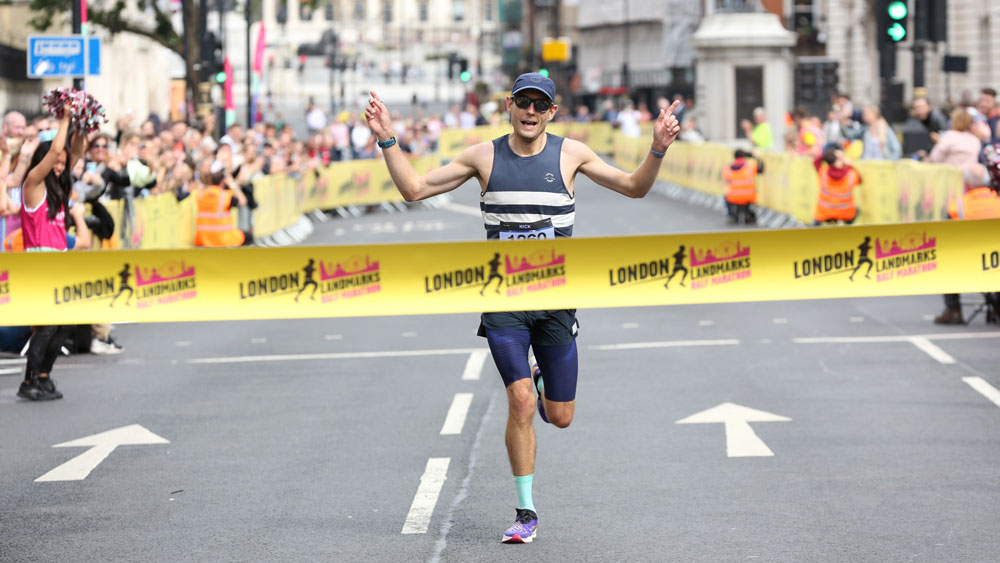
The London Landmarks Half Marathon is one of the UK’s most popular half marathons, taking a scenic route that passes some of London’s most notable landmarks.
Each year places are so sought-after public entry is determined via a ballot. 2024’s race will see over 16,000 runners line up at the start on Pall Mall.
The 2024 race is just around the corner, so here’s everything you need to know to prepare for the London Landmarks Half Marathon.
When is the London Landmarks Half Marathon 2024?
The event takes place on Sunday April 7, 2024.
Starting waves will begin between 9.15am and 11.40am. If you’re taking part, your time will have been emailed to you in mid-March, so dig through that inbox to find your wave time.
If you haven’t received your email yet, or it’s disappeared into the ether, you can find your start time and wave on the official website.
How to get to the London Landmarks Half Marathon start
The best way to get to the London Landmarks Half Marathon start is by using the Tube, and the best station to use will depend on your start wave.
Waves 1, 2, 3 & 4: Embankment or Charing Cross
Waves 5, 6, 7 & 8: Green Park or Piccadilly Circus
Can you still enter the London Landmarks Half Marathon 2024?
If you haven’t already got your place in this year’s race, you’ll need to wait until 2025. Both public balloted entries and charity places have been filled for this year.
But it is never too early to start thinking about next year! You can pre-register for 2025’s race now.
Which London sights do you pass in the race?
Part of the attraction of the London Landmarks race is, of course, the landmarks. The closed-road route through central London is adorned with musical interludes, dancers and cheer stations, as well as London scenery to take in.
Sign up for workout ideas, training advice, reviews of the latest gear and more.
The route starts by Nelson’s Column before passing a range of London’s incredible sights, buildings and monuments.
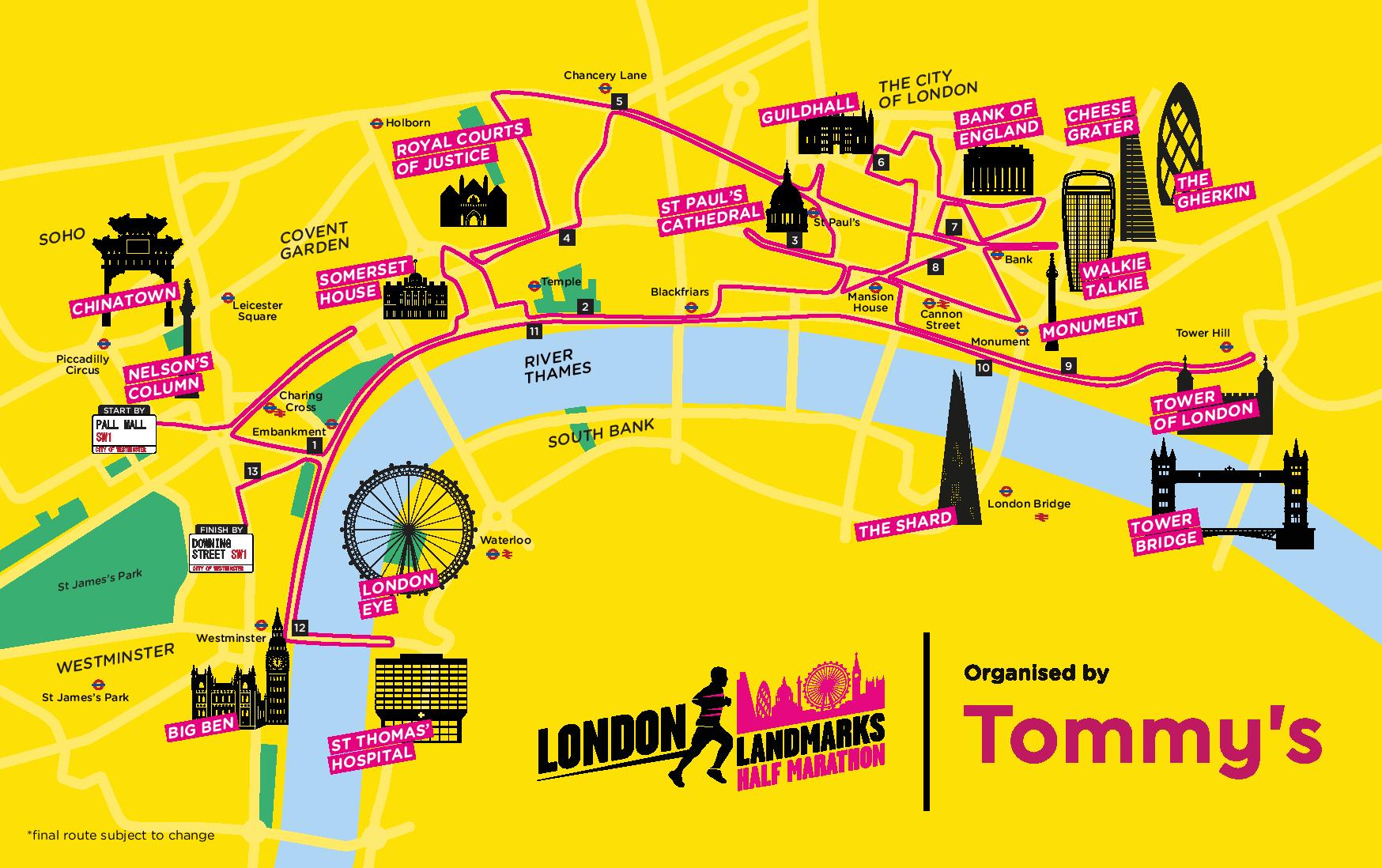
On the north side of the Thames, you pass Somerset House, the Royal Courts of Justice, St Paul’s Cathedral, Guildhall, the Bank of England, the Leadenhall Building (aka the Cheesegrater), the Fenchurch Building (aka the Walkie Talkie), 52 Lime Street (aka The Scalpel), the Monument to the Great Fire of London and the Tower of London.
The route then takes you along the north bank of the river past Big Ben, and you cross to the south bank between the London Eye and St Thomas’ Hospital. You then cross the Thames once more and finish by Downing Street.
This year’s route has been altered slightly to adapt the course for wheelchair entrants.
Is there a London Landmarks Half Marathon 2024 app?
Yes! Download the app now for all the help and advice you may need for this year’s race.
Go to your app store and search for “London Landmarks Half Marathon” to find it.
Can you track runners doing the London Landmarks Half Marathon 2024?
Yes. If you want to follow the progress of a fellow runner, you can do this via the London Landmarks Half Marathon app.
Once you have downloaded it, you will be able to see the interactive supporter map so you can track the runners you know.
Will there be a bag drop for the London Landmarks Half Marathon?
Yes. Bag drops buses can be found at the following locations based on your wave group:
Waves 1, 2, 3 & 4: Pre-event & post-event: Whitehall
Waves 5, 6, 7 & 8: Pre-event: St James’s Street, Post-event: Waterloo Place South.
All information for on the day advice can be found in the 2024 Race Day Guide.
How do you train for a half marathon?
Whether it’s your first time tackling 13.1 miles or you’re looking to break the 2hr barrier, finding the right training plan for you is vital. Coach has a wide variety of half marathon training plans to see you to the finish line.
The London Landmarks Half Marathon Route
Cramming 21.1km into the heart of London means a fair few twists and turns, especially since the London Landmarks Half Marathon route has been designed to pass as many landmarks as possible, so while the LLHM is reasonably fast and flat there are better races out there for PR hunters.
You won’t get as much to look at in other races, though, and changes to the LLHM route in 2023 and 2024 mean it now takes in even more landmarks. Runners start next to Trafalgar Square and, after a quick jaunt up Charing Cross road to Chinatown, continue east past St Paul’s Cathedral to take in the skyscrapers of the City of London. The route at this stage is very twisty and you’ll lose all sense of direction until you get to the Tower of London at around the 16km mark, when you turn west and follow the banks of the Thames back towards Big Ben.
Runners then head across the river on Westminster Bridge to get a good look at the London Eye, before coming back over the bridge and heading for the finish on Whitehall by Downing Street.

If you run the race at an easier pace than normal, you’ll benefit from a range of quirky and motivational attractions the organisers have put on. There are dance acts, musicians and 350 charity cheer zones.
Training And Racing Tips From London Landmarks Half Runners
We grabbed a few of the finishers to ask them for their half marathon tips. While some of the training advice may not exactly match that you’d get from a running coach, it certainly worked for them and it does give you an idea of the work people put in to get round the course in something like two hours.
Give Yourself Enough Time To Train
It may not be a marathon but 21.2km is not a distance to sniff at, so it requires commitment. “Make sure you train well in advance. Leave about three months, at least,” says Luke, a sub-2hr finisher.
Include Long And Short Runs
Make sure you vary your sessions. “I did a few short runs – 5K max – in the morning during the week,” says Susan. “Then went for a longer run on the weekend. My longest run before this was 14.5km.”
And remember that you don’t have to slog it out alone. “Parkrun!” chorused Sarah, Af and David when we asked about their weekly runs. “A parkrun once a week and a distance run. Usually 10, 12 and 15km. Then work it back down again,” Af says.
Stretching – Do It
You’re doing a lot of training, give your muscles proper care. “Make sure to keep stretching and doing different exercises,” says Susan. It’ll make all the difference. Use these post-run stretches and stretches for runners to speed up your recovery.
Pick The Right Start Wave
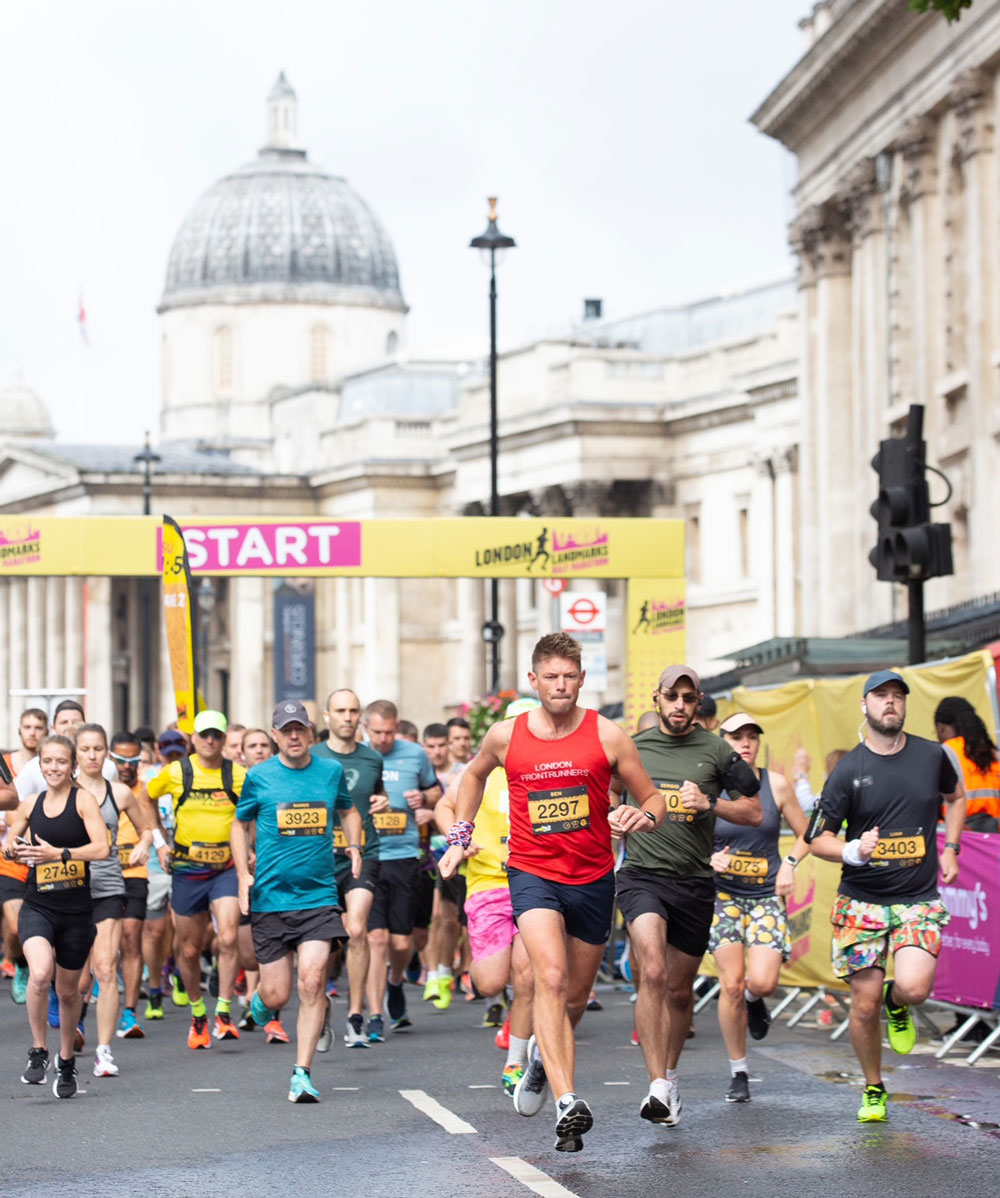
Think very carefully about which wave you put yourself in. “We were in a slower wave than we should have been,” says Michelle. “It was busy,” adds her friend Kirsty, “lots of people around, so we had to do a lot of weaving and moving about.” You’ll be allocated your start wave based on an estimate of your finish time, so try to answer that question as accurately and fairly as you can. Our running pace calculator should help.
Fuel Yourself
“Make sure you have a plan for what you’re going to eat on the day,” says Luke. You’ll be running for around two hours, burning roughly 100 calories per mile, so make sure to fuel yourself properly.
Don’t Go Off Too Fast
It’s easy to get excited on race day and start too quickly. “Just take it easy,” says Kirsty. “Try not to get excited at the beginning and think ‘I feel awesome, I’m going to go really fast’ because you won’t hold it and you’ll die a painful death.”
Have The Right Mentality
Here’s music to our ears. “Just train and enjoy it. You’re never going to win it, so just enjoy it and don’t worry about times,” said Ross. “Go out there and do it!”
And Believe In Yourself
“Anyone can do it. Just keep working away at it and it’ll happen,” says Julie.
– Interviews by Jake Stone
Tips From A London Landmarks Half Marathon Pacer
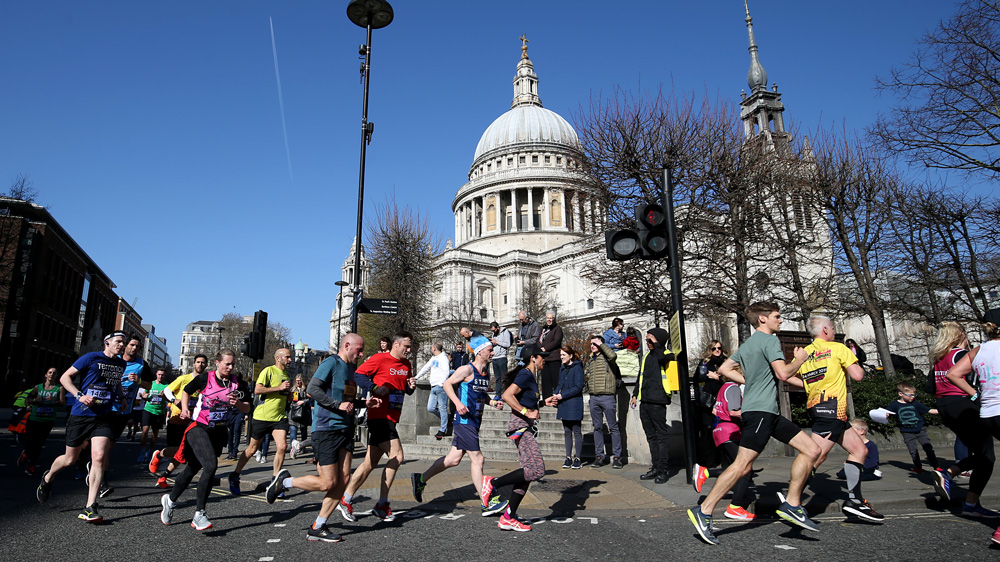
We caught up with Nici Griffin from Centurion Running before the 2019 event. Griffin organised the pacers and was the tail-end pacer in both 2018 and 2019. She ran her first half marathon in 2010 and has since gone on to complete 28 marathons and four 50-mile ultramarathons. Don’t let that intimidate you though – Griffin called herself the “baby” of her ultramarathon group and said she had to remember not to compare herself with others but focus on what she’s capable of. That’s just one of many fine tips we picked up from our chat. Here are the rest of them.
Get Involved On Facebook Beforehand
Being a pacer, says Griffin, is about a lot more than just setting a pace for others to follow. “If we were told we couldn’t interact with the crowd and had to just carry a flag we wouldn’t do it. The best part is interacting with the people around you, in the start pens at the beginning, even beforehand – Facebook has been amazing for that. You get the banter going, and you get people who are going by themselves on the day feeling like they’ve got a friend – they come and look for you in the wave pens at the start.” Have a look at the comments on facebook.com/londonlandmarkshalf for starters.
Be Happy You’re Running A Race In London
“London is the most ace city for running any big race in,” says Griffin. “It’s so welcoming – the runners, the volunteers, the members of the public out there… you just get so much support.” One particular supporter stood out for Griffin in last year’s LLHM. “Last year there was a child on Embankment and he had this hand-made sign which was a Power Up Power Rangers sign [which promised a ‘power boost’ if you touched it]. It was brilliant seeing all the runners purposely cross to his side of the road to high-five his sign.”
Look Forward To These Course Highlights
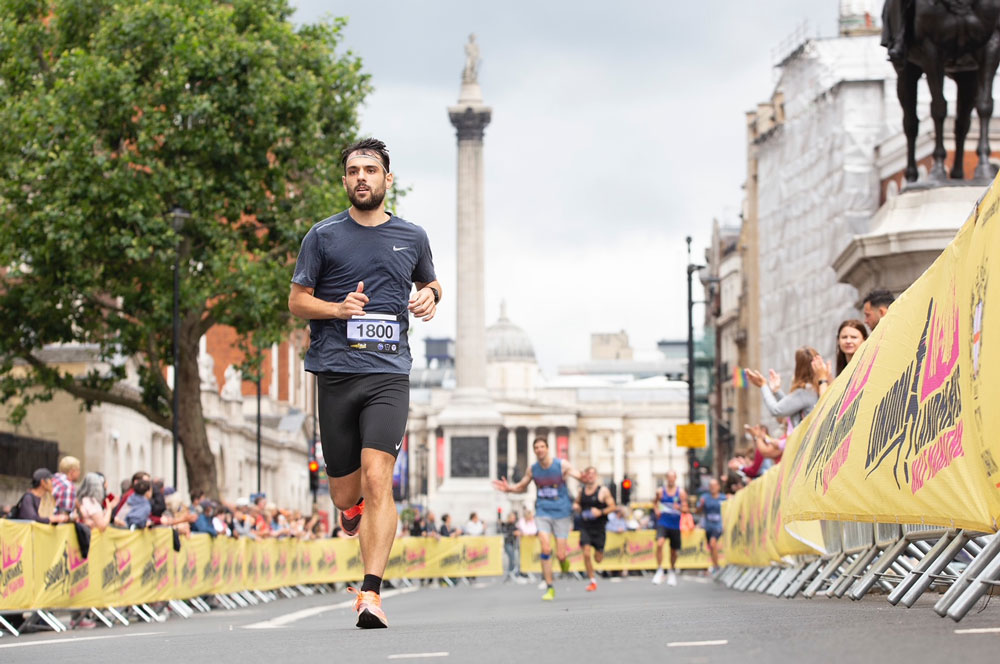
“I like the City of London part,” says Griffin. “There are a lot of switchbacks down side streets, and I like the historical architecture you find there with the backdrop of all the new stuff – it’s quite amazing.” Griffin also namechecked St Paul’s – “who doesn’t like St Paul’s Cathedral?” – and running along the Thames towards Big Ben. “When you get to the Tower of London and turn around that’s a real high spot, especially because you think, ‘that’s it, I’m heading for the finish now’. But for me the most beautiful bit is along Embankment. You’ve got all the people out walking along and they’re all cheering – it’s just brilliant.”
But Prepare Yourself For This Bit
Griffin said her “dark part” of a half marathon was always around the nine-mile portion, which happens to coincide with what she says is the least pleasant part of the course for the London Landmarks race. “Coming out of the City going down to the Tower of London, that to me is quite dire and lonely.”
Whether you’re struggling or flying at that point, odds are the going will get tough for you at some point. When that happens try this technique Griffin picked up from Paula Radcliffe. “I count my footsteps – 1-2-3-4 1-2-3-4. It’s mind-numbing, but it just gives me something to think about rather than look ahead and think, ‘Oh my God, Big Ben is so far away’.”
Enjoy It
No matter what happens, try to enjoy the day. And if you’re thinking that’s easy for an ultramarathoner to say, Griffin confessed that she got her first half all wrong. “My longest run in training for that first half marathon was maybe five miles – it was shocking preparation and I got overtaken by a lady with a pushchair, but I still loved that first one.
“At this stage it’s too late to panic about anything anyway – just enjoy it. It’s an amazing memory. There are 13,000 other runners, the pacers, the team that put it together, all out there supporting you. Just enjoy the day.”
And Be Proud Of The Achievement
“A lot of people shrug it off – ‘I’m only doing a half’. No, no – don’t put yourself down. And don’t be fooled, 13 miles is a long distance. It’s just as admirable as a marathon, a 50-miler, a 100-miler. You wouldn’t pop out and do a half marathon distance on a Saturday morning for fun!”
– Interview by Jonathan Shannon

Nick Harris-Fry is a journalist who has been covering health and fitness since 2015. Nick is an avid runner, covering 70-110km a week, which gives him ample opportunity to test a wide range of running shoes and running gear. He is also the chief tester for fitness trackers and running watches, treadmills and exercise bikes, and workout headphones.
- Jonathan ShannonFormer editor
- Lois MackenzieFitness writer
- Jake StonesContributor
